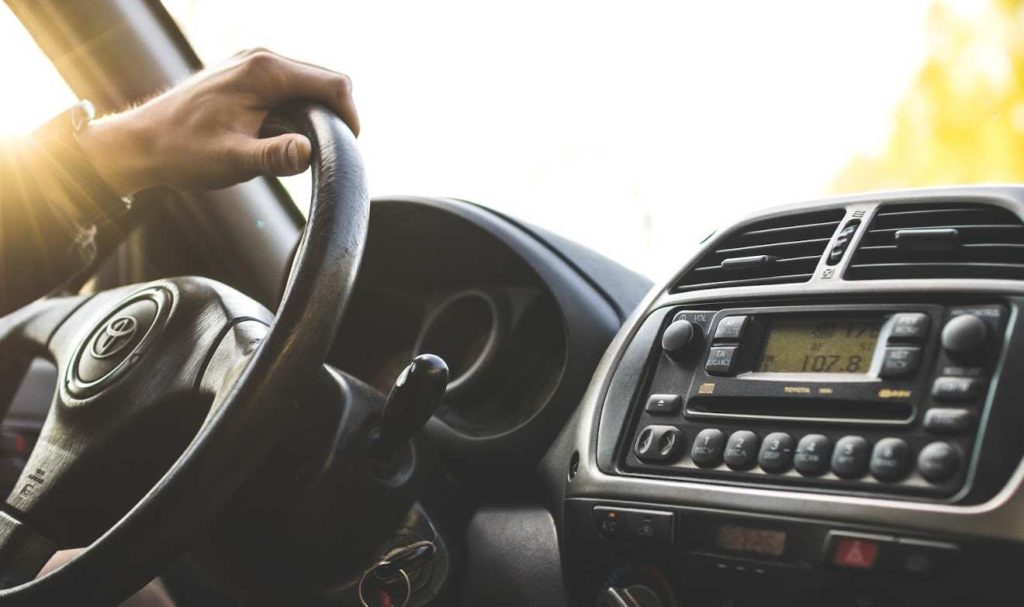Problems With Your Power Steering?

The debate is on. Are autonomous vehicles a reasonable option to increase safety on the road? Or are they a problem waiting to happen? While there is a plenty of planning, testing, and data collecting going on alongside all the talk, the jury is out. For now, cars are still directed by humans with their hands gripping the steering wheel.
What is power steering?
An essential aid for safe driving is the power steering system that makes the steering wheel easy to turn. Once upon a time, cars had manual steering and many drivers had to struggle to turn the wheel. Power steering became commercially available in the nineteen-fifties and today is standard on all cars, trucks, and SUVs on the market. The system is made up of a gearbox (or a steering rack and pinion) that responds to input from the driver, a hydraulic pump driven by the engine that increases the force inside the gearbox/rack (some vehicles use an electric motor to drive the pump), a series of hoses that connect the hydraulic components, and a pair of tie rods that connect to the wheels. The power steering pump allows hydraulic fluid to amplify the force exerted on the steering wheel, making it easier to turn.
But what if the system fails? If the power assist malfunctions during driving, the steering wheel will still turn, but it requires great effort – even more than manual steering. The vehicle will become difficult to maneuver. And that can be dangerous. Imagine you are in the middle of an intersection and the steering wheel suddenly becomes stiff and refuses to turn easily. Power steering assist is necessary for proper operation of the steering system in a modern car.
Of course, most people do not anticipate a steering failure. A lot of faith rests on the power steering system. Fortunately, most of the time the system is pretty reliable. But problems do sometimes occur. Understanding the symptoms of a failing power steering system and what causes them can help to prevent a problem from occurring on the road.
Symptoms and Causes of Power Steering Problems
- A whirring or chattering sound when you turn the steering wheel is usually a sign that the power steering fluid is low. Driving with this condition can cause not only difficult driving, but also serious damage to the power steering system. Check and fill the fluid reservoir (see vehicle owner’s manual) and then have the system inspected for leaks.
- Stiff or sluggish steering response can be caused by either a blocked, damaged, or pinched hose that is restricting the flow of hydraulic fluid. It could also be caused by a faulty power steering pump.
- Groaning or humming noises coming from under the hood are a more serious signal that the power steering pump is going bad. It is usually an indication that the bearings in the pump are wearing out. The pump should be inspected and replaced before it fails completely.
- Complete lack of power assist can also be result of a blocked, damaged, or pinched hose. More likely it is a result of a severe leak or a failed power steering pump. No power assist can also be caused by a broken serpentine belt. On cars equipped with electric power steering (EPS), a faulty electric motor or even a blown fuse could affect the power assist.
- Squealing or screeching sounds coming from under the hood are often associated with the power steering system, but this noise (as opposed to the whirring sound mentioned above) is usually due to a damaged or worn serpentine (drive) belt, a faulty belt pulley, or a belt-driven component that is failing. It is possible, however, that the reason for a squealing belt is that the power steering pump is in the process of seizing up and therefore causing the belt to slip.
- A puddle underneath your car is not necessarily a sign of a power steering problem. It could be a leak of any one of the fluids in your vehicle. But it could indicate a leak in the power steering system.
What to do if you suspect a problem with your power steering system
If you hear one of these unnatural noises coming from under your hood, or if you see signs of a leak under your car, make sure to have it inspected as soon as possible. This way you can avoid additional damage to the power steering system. More importantly, you might avoid a dangerous driving condition should your power steering system fail while you are on the road.
There may be a day when all of our cars do the driving themselves. A world with no more steering wheels to turn. But that day has not yet come. So, until then, keep your eyes on the road and your hands on the wheel. And make sure your power steering system remains up to the task.
Hogan & Sons Tire and Auto | Author: Mike Ales | Copyright
This article is intended only as a general guidance document and relying on its material is at your sole risk. By using this general guidance document, you agree to defend, indemnify and hold harmless Hogan & Sons Tire and Auto and its affiliates from and against any and all claims, damages, costs and expenses, including attorneys’ fees, arising from or related to your use of this guidance document. To the extent fully permissible under applicable law, Hogan & Sons Tire and Auto makes no representations or warranties of any kind, express or implied, as to the information, content, or materials included in this document. This reservation of rights is intended to be only as broad and inclusive as is permitted by the laws of your State of residence.


